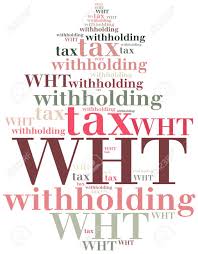 Investing more money in tax administration would result in more efficient tax collection, which could help close the so-called tax gap of revenue lost to noncompliance, federal officials told a congressional panel on May 9, 2019.
Investing more money in tax administration would result in more efficient tax collection, which could help close the so-called tax gap of revenue lost to noncompliance, federal officials told a congressional panel on May 9, 2019.More money invested in the Internal Revenue Service would lead to more revenue collection and improved taxpayer compliance, the officials said, speaking at a hearing on the tax gap held by the House Ways and Means Committee. Expanded reporting requirements would also help, said J. Russell George, the Treasury inspector general for tax administration.
 IRS audits are the most productive tool with which to increase taxpayer compliance and reduce the tax gap, but they are costly, and the agency often lacks the resources to conduct more reviews in person, George said.
IRS audits are the most productive tool with which to increase taxpayer compliance and reduce the tax gap, but they are costly, and the agency often lacks the resources to conduct more reviews in person, George said.
The IRS is currently operating on a budget of $11.3 billion for the fiscal year that runs through the end of September, well below the agency’s peak of $14 billion in funding for 2010.
In response to a question about auditing high-income nonfilers posed by Rep. Judy Chu, D-Calif., George said the IRS is in the process of renewing its program to increase audit activity on those individuals, but in other cases, audits are conducted through the mail, and are less efficient.
IRS Statement on the Tax Gap Update
The IRS periodically estimates the tax gap, which gives a broad view of the nation’s compliance with federal tax laws. The new study covers tax years 2008-2010. The report finds that there has been no significant change in the amount of the tax gap or the rate of compliance since the last report was issued for tax year 2006.
 The average annual tax gap for 2008-2010 is estimated to be $458 billion, compared to $450 billion for tax year 2006. IRS enforcement activities and late payments resulted in an additional $52 billion in tax paid, reducing the net tax gap for the 2008-2010 period to $406 billion per year.
The average annual tax gap for 2008-2010 is estimated to be $458 billion, compared to $450 billion for tax year 2006. IRS enforcement activities and late payments resulted in an additional $52 billion in tax paid, reducing the net tax gap for the 2008-2010 period to $406 billion per year.
The voluntary compliance rate is now estimated at 81.7 percent compared to the prior estimated rate of 83.1 percent. After accounting for enforcement and late payments, the net compliance rate is 83.7 percent.
The small increase in the estimated size of the tax gap and small decrease in the voluntary compliance rate are largely attributable to improvements in the tax gap estimation methodology, and do not represent a significant change in underlying taxpayer behavior.
The changes also reflect the overall decline in the nation’s tax revenues due to the severe recession during the time period covered by this study, as well as changes in the mix of income sources that have different compliance rates.
A high level of voluntary tax compliance remains critical to help ensure taxpayer faith and fairness in the tax system. Those who don’t pay what they owe ultimately shift the tax burden to those who properly meet their tax obligations. The new tax gap estimate updates long-standing research findings that information reporting and withholding are strongly associated with higher levels of voluntary compliance.
The IRS continues to look for ways to keep the voluntary compliance rate high, including educational efforts aimed at preparers and taxpayers, ongoing efforts to improve compliance in the international tax arena, and working with businesses on employment tax issues.
Sources
Read more at: Tax Times blog








